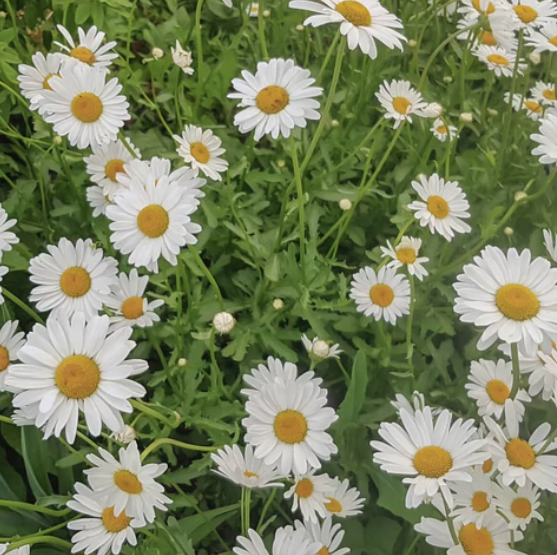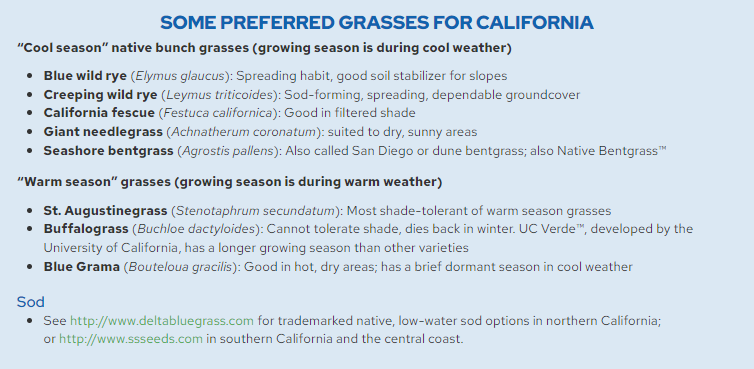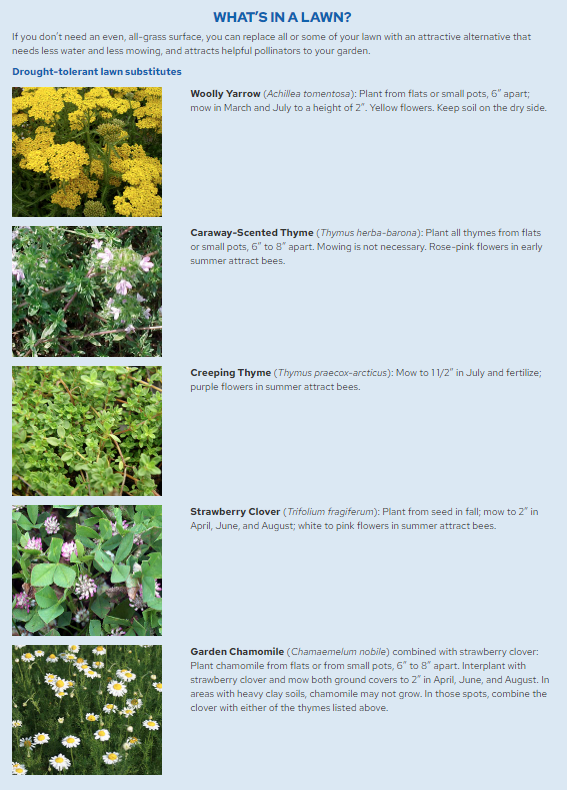
Although grass lawns can add charm and character to your home, grass can also be water-intensive to grow and maintain. Drought-tolerant alternatives to grass lawns provide the aesthetic benefits of vegetation, without comprising on water efficiency.
Start out with the right seed or sod
- For species that need less water than traditional turf varieties:
- Do some research before you decide what grass species to plant. See the list inside, and this helpful publication from the University of California on Turfgrass Species. Choose a mixture of grasses suited to your climate and the conditions in your yard.
- When installing sod, be sure to choose sod that has been propagated in conditions similar to your own.
- Consider having your soil professionally tested so you can choose grass that matches your soil’s texture, pH, and salt and nutrient levels.
Prepare the soil before you plant
- Don’t work the soil when it is very wet. You can damage its structure.
- Break up all dirt clods into fine particles and remove pebbles and stones.
- Thoroughly mix soil layers of different textures, down to at least six to eight inches, before planting. Poor soil preparation can cause poor drainage and weaken the turf.
- Check for low spots by irrigating. Smooth out or fill in areas where you see puddles (very important if you are seeding a lawn).
Water a new lawn with care
- Until grass becomes established, keep the soil in your newly planted lawn thoroughly moist, but not too moist. Too much water can wash away seeds or drown young plants.
Restoring a Lawn to Health
A healthy lawn needs air, water, and nutrients reaching the roots. An old or neglected lawn, or one that gets heavy use, may have a thick layer of thatch, or the soil may be compacted so that roots cannot grow well.
Give it Air!
A lawn’s root system needs air to grow and grow deep into the soil. If you can’t push a screwdriver five or six inches into the soil, or if water pools on the surface, you should aerate your lawn. Areas where there is heavy foot traffic or where grass looks thin are good places to check.
- Use a hollow-tined aerator that removes plugs of soil. Aerators can be foot-operated or motorized and rented from hardware stores or borrowed from tool libraries.
- For best results, aerate during your lawn’s strong growing season.
- The day before you aerate, water the lawn until the soil is moist five to six inches deep. This will help you push the aerator deeper.
- Leave the plugs on the lawn. When they have dried out, break them up with a rake.
Removing thatch
Thatch is a matted layer of living and dead grass stems and roots that can build up between the green blades and the soil surface. A half-inch of thatch can help your lawn retain moisture and block weeds, but a thicker layer can keep air and water from reaching the roots. If your lawn has a bouncy feel when you walk on it, thatch is probably building up. Aeration can help with thatch.
- Thatch is less likely to build up in a healthy lawn on biologically active soil. This is another good reason not to use lawn chemicals that can destroy soil organisms!
- The best time to remove thatch is during the active growing season, when grass will recover more easily.
- Before you de-thatch, mow the lawn a little closer than usual. If the lawn is very dry, water thoroughly the day before.
- If your lawn has a thicker thatch layer than aeration can handle, you may need to de-thatch with a special thatching rake or a “vertical mower” (which you can rent).
- Water well after de-thatching; aerate if necessary; and throw away thatch in your green waste bin.
Find more information on planting a healthy, drought-tolerant lawn in our OWOW brochures in English and Spanish.
The City of Goleta along with the Cities of Buellton, Carpinteria, Solvang, Santa Barbara, Santa Maria, and the County of Santa Barbara have partnered with the OWOW organization to promote the use of less-toxic products in an effort to reduce pesticide pollution in our communities. By reducing pesticide use and the use of less-toxic products around the home, you can help reduce pesticides and other pollutants such as herbicides and fertilizers from being picked up while watering or when it rains and transported to the nearest storm drain inlet and into our waterways. The OWOW website is a great resource for finding less-toxic products to use around your home or garden.



